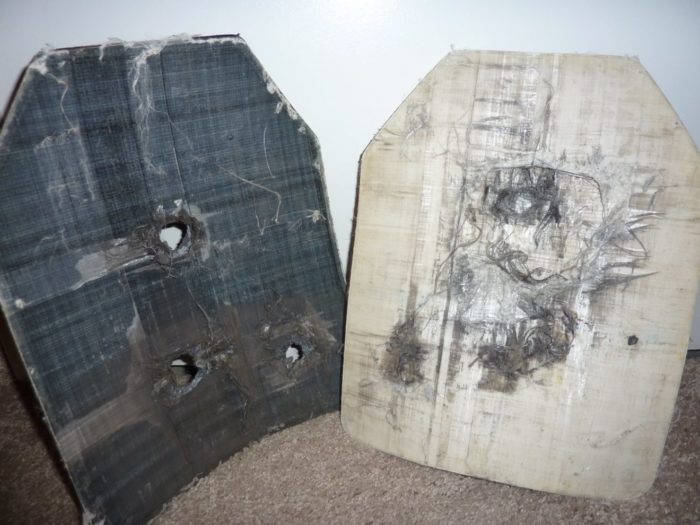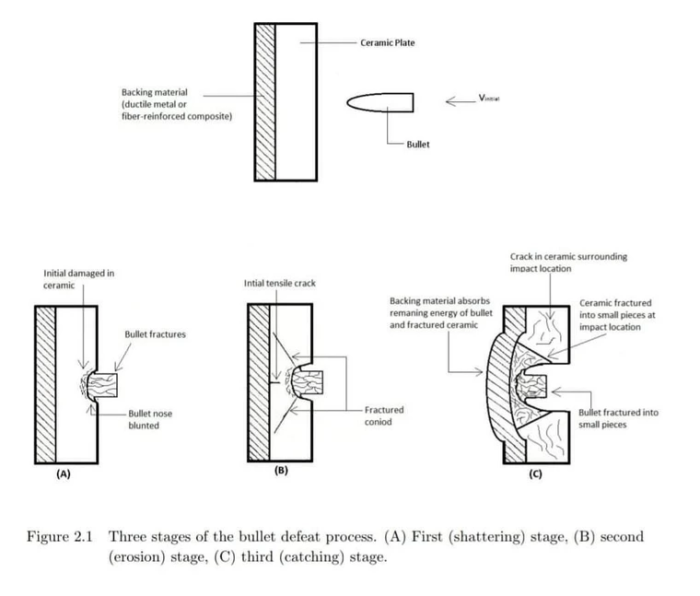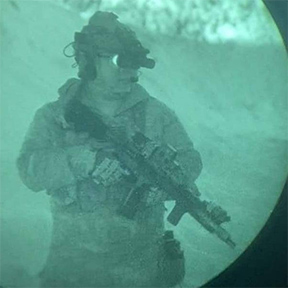Ceramic Plates Do Not Spall: The Truth About Ceramic and Steel Armor
What Is Spalling?
First, we must define and understand what spalling is. The correct technical term for this phenomenon is “bullet splash” or “bullet fragmentation.”
Bullet splash occurs when a softer projectile (take, for example, lead core, FMJ, or mild steel core) impacts a surface of superior hardness that does NOT deform or break.
In the case of AR500 armor, when a projectile strikes the surface, the bullet squashes or mushrooms, then explodes into dozens of small fragments. 𝑴𝒐𝒔𝒕 𝒐𝒇 𝒕𝒉𝒆𝒔𝒆 𝒇𝒓𝒂𝒈𝒎𝒆𝒏𝒕𝒔 𝒇𝒐𝒍𝒍𝒐𝒘 𝒂𝒍𝒐𝒏𝒈 𝒕𝒉𝒆 𝒑𝒍𝒂𝒕𝒆 𝒐𝒓 𝒑𝒂𝒓𝒂𝒍𝒍𝒆𝒍 𝒕𝒐 𝒕𝒉𝒆 𝒔𝒕𝒓𝒊𝒌𝒆 𝒇𝒂𝒄𝒆.
These fragments travel at a high velocity and will penetrate plate carrier fabric.
The “spall coating” on AR500 plates does very little to stop this. Generally, after 1-2 shots, chunks will begin to blow off of the coating, or the fragmentation will begin to delaminate the coating from the plate.
Many people focus on the thickness of the spall coating on the front of the plates, which does not help when the fragmentation exits the sides of the plate where the coating is thinnest. (Remember, fragmentation follows the strike face).
The video below shows a very different result from what AR500 Armor shows in their video. Buffman R.A.N.G.E. has a history of testing armor accurately and has an excellent video here showcasing the dangers of bullet fragmentation. The video shows failure after a few rounds.
The best analogy I can give is if you hurled a tomato against a concrete wall. The concrete wall does not deform; however, the tomato will disintegrate and splatter against the wall. The same phenomenon happens with steel plates, only instead of pieces of tomato, you get hot metal fragments.
Linked below is an ultra-slow-motion video of projectiles impacting a steel plate. You will see the projectiles squash against the plate and shatter into pieces.
Why Ceramic Plates do not Spall
What Happened in the AR500 Video?
John is the owner of Apex Armor Solutions and has been working within the armor industry since 2016.



